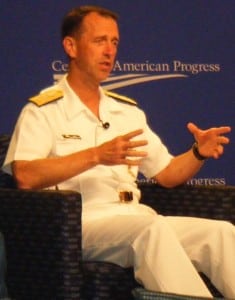
The U.S. Navy is looking for ways to “get more usefulness” out of its new, growing fleet of Littoral Combat Ships (LCS), the service chief said Sept. 12.As more ships are fielded, the Navy hopes to figure out how to increase their capability and make them simpler to operate, Chief of Naval Operations Adm. John Richardson said. The Navy has accepted delivery of eight of the 28 LCSs it plans to buy to perform anti-submarine, mine and surface warfare.“The only…

 By
By 











